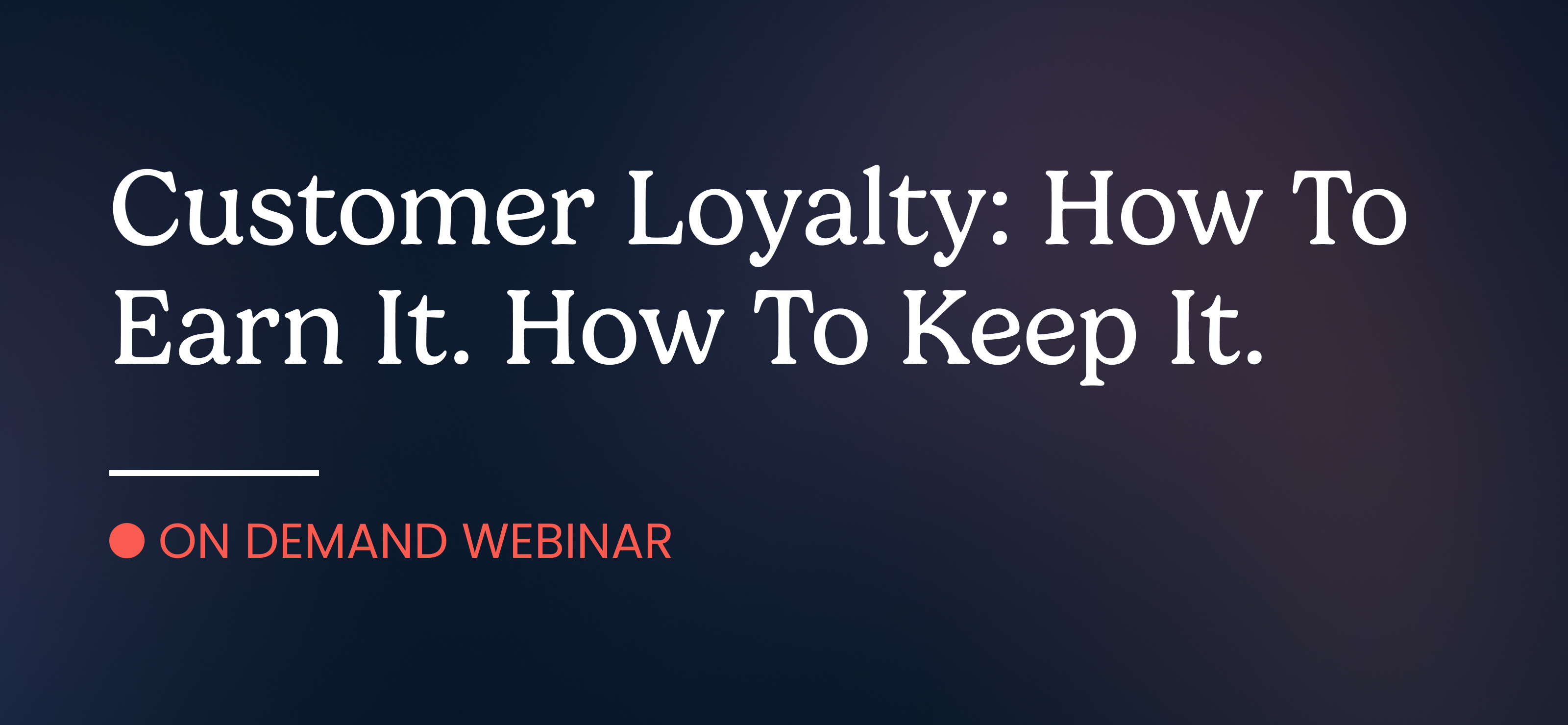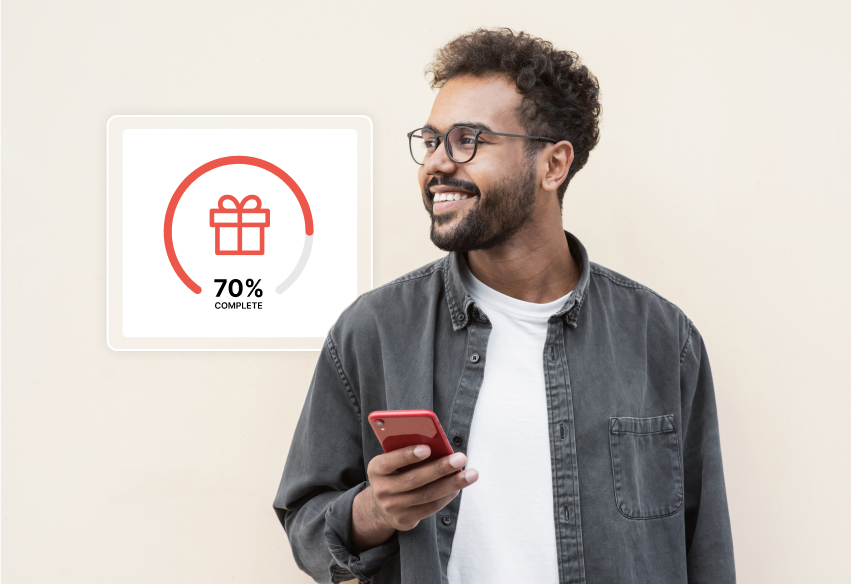
Fun fact: a Statista survey recently found that 70% of consumers engage longer with a brand if they are members of its free or paid loyalty programs.
So, if you’ve ever wondered — do loyalty programs work? — the stat above proves that focusing on customer retention through loyalty programs can boost customer engagement, and potentially, your business’s bottom line.
Customer loyalty programs (aka rewards programs) are marketing strategies that incentivize repeat business by rewarding customers for continuing to engage with a brand. These programs often offer discounts, points, or exclusive perks in exchange for the customer’s loyalty.
The end goal? To foster long-term customer relationships and increase retention rates. Effective loyalty programs can help maintain a healthy customer base.
All that being said, the success of rewards programs will vary from one retailer to the next, and if you want to find out if your loyalty efforts are working you need to track and analyze their performance.
This article takes an in-depth look at loyalty programs, why they work, and why some initiatives are more effective than others.
Understanding customer loyalty programs
Do rewards programs work?
The short answer is it depends.
Loyalty programs help businesses encourage repeat purchases and promote a stronger brand connection. There are several different types of loyalty programs that you can choose to implement.
Points-based loyalty programs
Point-based loyalty programs are ubiquitous among retail and hospitality sectors for their simplicity and effectiveness. Operating on a straightforward premise — spend more, earn more — these programs incentivize customer spending.
Points earned correlate with transaction value, redeemable for rewards like discounts or exclusive perks. Customers actively strive to accumulate points, driven by the desire to redeem rewards, which enhances their brand loyalty.
For example, LEGO-certified stores in South Africa set up an effective point-based program with Marsello’s help that works seamlessly on in-store and online purchases. Customers accrue one point for every R 1.00 spent and get another 100 bonus points on their birthday. The company provides cash-back incentives plus an exclusive LEGO gift, which shoppers can redeem in-store.
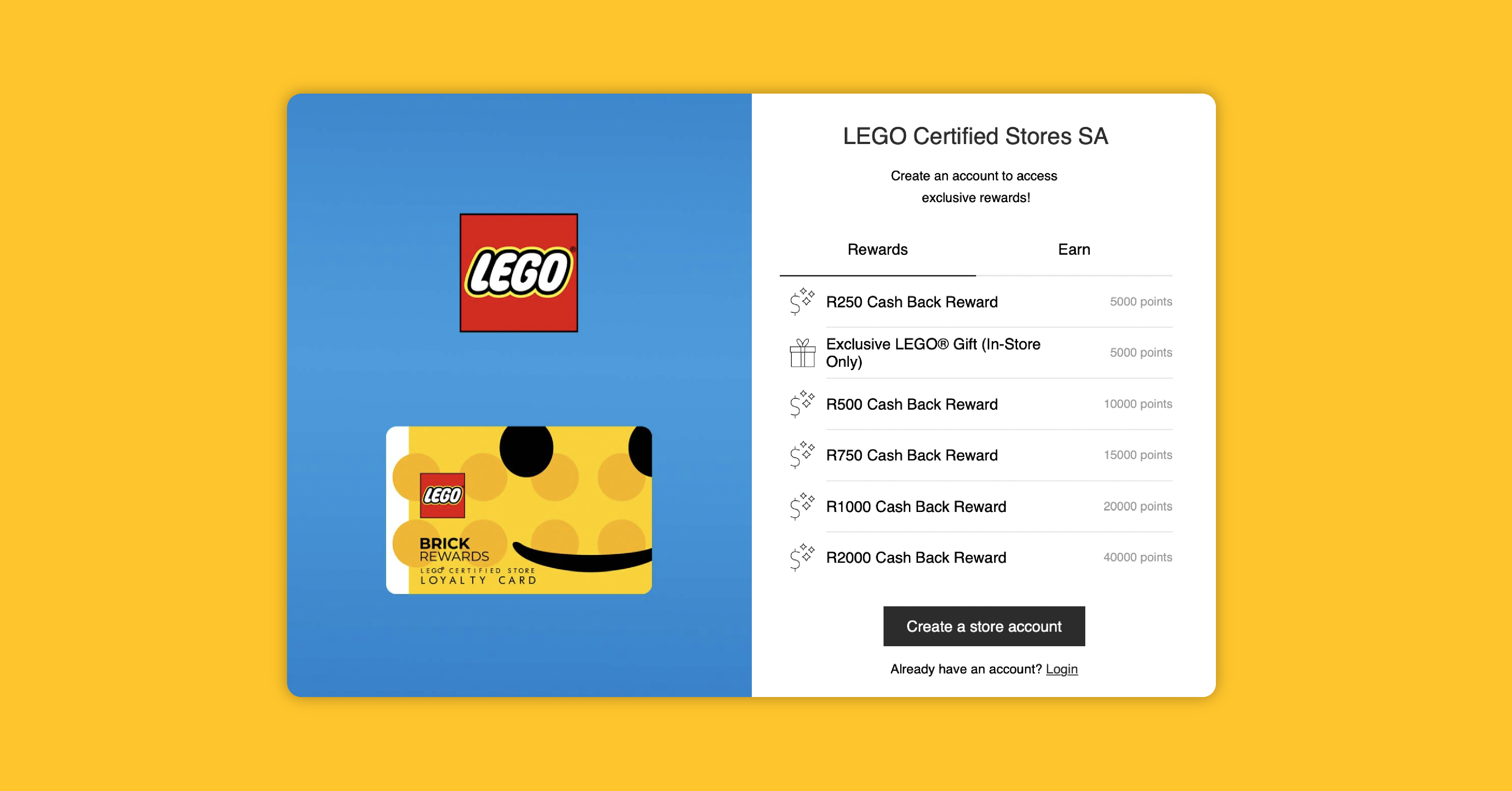
Tiered loyalty programs
Tiered loyalty rewards are all about encouraging shoppers to level up their relationship with a brand. Customers accrue points with each purchase, which then enable them to advance different loyalty levels. The higher the tier, the greater the rewards, and this motivates customers to increase their loyalty and engagement with a brand.
Sephora’s Beauty Insider Program is an excellent example of a tiered loyalty program. Not only do customers earn points on all their purchases, they can also move up different loyalty levels based on their spending.
For example, if a customer spends $350 in a calendar year, they get promoted to the Very Important Beauty Insider (VIB) status. On spending $1000, they will be upgraded to the Rouge status with even better rewards.
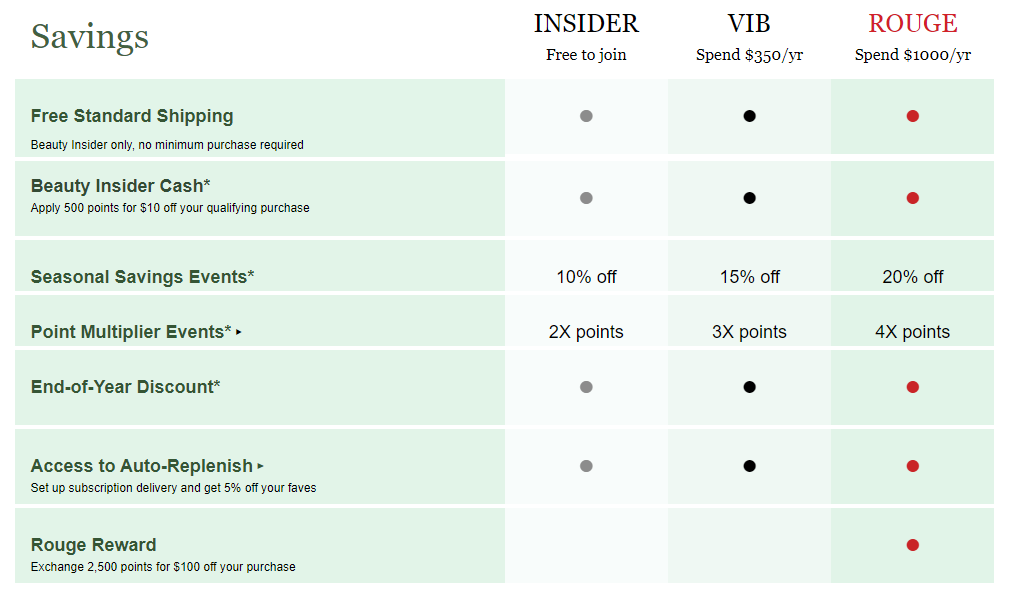
Spend-based loyalty programs
In these programs, customers earn loyalty credits corresponding to their spending with tbe business.
The beauty of spend-based programs lies in their simplicity. The structure is easy to grasp and has proven highly effective in boosting order values and decreasing churn.
Melbourne-based fashion label and Marsello client ALPHA60 implemented a very successful and simple spend-based program. In line with a customer-centric strategy, it opted for a straightforward loyalty program — spend $1000, earn 1000 points, and receive a $50 voucher.
In the words of its Brand Strategist Kelvin Janissen, “We try not to complicate it too much and add different things in, and that really works for us. I think it’s because it’s simple for people. It’s easy for customers to understand.”
VIP programs
A VIP program is a customer loyalty strategy wherein a business offers exclusive benefits like discounts, premium product access, and special rewards to a select customer segment. Participation in this program might require payment or meeting criteria like a particular purchase amount or engagement levels.
Run by the Pantaleo family, Pinjarra Bakery is the destination for Australia's finest meat pie, boasting over 700 state and national accolades to its name. The brand implemented a VIP loyalty program offering its loyal customers exclusive content as well as early access to new products.
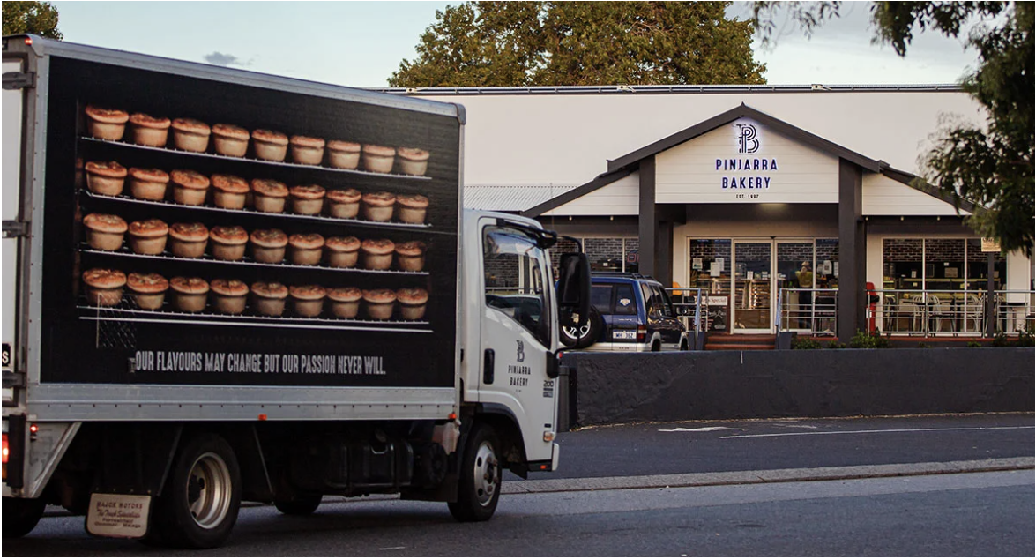
SMS campaigns directed at its VIP members have been especially successful. Over three months in early 2022, just two SMS campaigns brought in 15% of its total revenue. Pinjarra Bakery's loyalty program accounts for one-third of all revenue attributed to marketing efforts.
Paid loyalty programs
A paid loyalty program is similar to a VIP program where certain groups of customers get special access and exclusive products. But as its name suggests, customers pay a fee to be part of a paid program.
It can be harder to implement a paid program as it requires customers to shell out more money — on top of their purchases — to join the loyalty program. The key to making this work is to provide tremendous value to your members, so they’re happy to pay just to be a part of the program.
Amazon Prime is perhaps the most well-known paid loyalty program. For an annual fee, members get access to other Amazon services such as Prime Video and Amazon Music. By subscribing to Amazon Prime, members also get free, priority, and early deliveries for purchases from their eCommerce store.
Economics perspective on customer loyalty programs
Customer loyalty programs change how we think about rewards and prices. They alter incentive frameworks and skew perceptions of price. In traditional economics, people are seen as making rational decisions to get what they want. Loyalty programs add something new by encouraging people to keep buying, which affects how they spend their money.
Adding to this, Gidon Sadovski, founder of Overnight Glasses, advises retailers to focus on creating loyalty programs that prioritize the customer experience. "A successful loyalty program is one that makes customers feel valued, not just incentivized to spend," Sadovski notes. "When customers feel appreciated, they're more likely to become repeat buyers, creating sustainable growth for the business."
These programs take advantage of what people find useful, offering them more than just the items they buy. This fits with the economics of how people make choices, showing how loyalty programs play upon rational decisions and how people actually behave when they shop.
The psychological aspect of customer loyalty programs
When it comes to loyalty program effectiveness, economics are just the tip of the iceberg. There’s also some psychology involved.
The most effective loyalty programs touch on certain psychological aspects that can drive spending and brand loyalty.
This quote from the Journal of Consumer Psychology describes this phenomenon quite well:
“...‘true’ loyalty must move beyond special pricing “deals” and require some underlying psychological mechanism to increase the consumer's inherent preference for or propensity toward a brand or firm.” Henderson et al (2011)
The psychological basis of customer loyalty delves into several key drivers.
- Reciprocity: where customers feel obliged to return a favor, this fuels loyalty
- Social proof: drawing from the herd mentality, social proof influences choices based on others' actions
- Commitment: stems from a sense of obligation or attachment that solidifies brand allegiance
Its also worth noting that customer loyalty isn't solely restricted to brands. It often extends to the identity and community (i.e., the people) associated with brands.
Signaling theory suggests that loyalty signals one's values or status. So, by participating in loyalty programs, customers not only receive rewards but also signal to others that they are reliable supporters of a particular brand, which can reflect positively on their social image.
For example, if you have a lululemon membership, this could signal that you're a fitness person who wears high-quality, stylish clothes.
Still on the topic of psychology, there is a concept called comparison theory which asserts that loyalty arises from favorable comparisons to others. This could explain the success of paid and tier-based loyalty programs such as Mecca's Beauty Loop.
Tiers in loyalty programs like Beauty Loop allow customers to compare their benefits and status with others, encouraging them to aspire to higher tiers. As customers see the exclusive perks and recognition that come with upper tiers, they feel motivated to elevate their status by engaging more with the brand and building a higher loyalty status.

According to Henderson et al (2011), the three key pillars of a successful loyalty program are:
- Assigning status to consumers based on purchase frequency/loyalty: For example, in tiered loyalty programs, brands assign a particular status to customers based on their spending.
- Building habits: For example, brands must encourage customers to scan their loyalty card codes in-store.
- Developing relationships: Personalized marketing campaigns or automation based on specific customer actions can further enhance the effectiveness of your loyalty programs
Supposing you can implement all the above, what kind of benefits can you expect from a successful loyalty program?
- First, your monthly turnover could increase significantly. Our studies show that loyalty members spend an average of 58% more than non-members. To calculate the ROI of your loyalty programs, use Marsello’s free ROI calculator.
- Second, it can enhance your customer lifetime value and promote repeat business.
- Finally, it can provide valuable data and insights into customer preferences and behavior. This can help you implement targeted marketing strategies that further drive turnover.
Case in point: Four Square, a local supermarket chain in New Zealand, had a store right across the street from its competitors. The owner was under the impression that its customers were mostly 35-60-year-old women and stocked the store accordingly.
Working with Marsello to analyze loyalty data revealed that its customer base was mostly male. This helped the brand re-merchandize the store, which boosted average transaction values almost immediately.
Listen to this case study, and others, in this loyalty masterclass:
Final words
Loyalty programs don’t just provide direct benefits such as increased turnover and customer lifetime value but also provide invaluable data insights. If you haven’t done so yet, consider launching a loyalty program that make your customers feel like VIPs.
Need help? Get advice from a loyalty expert and start driving repeat sales.
Read more: 7 Steps To Building A Profitable Loyalty & Rewards Program


.png?width=1200&height=400&name=Frame%206%20(4).png)
